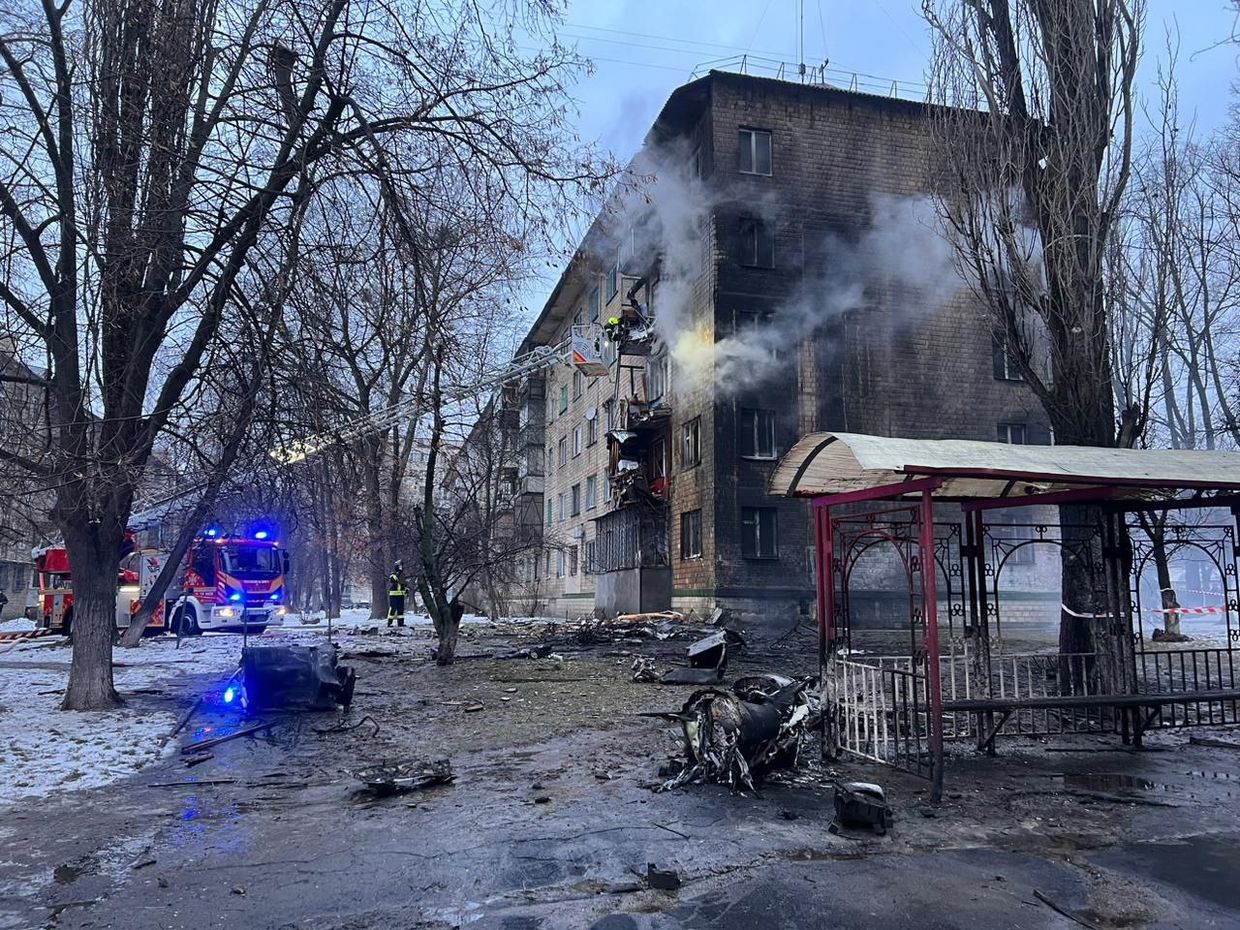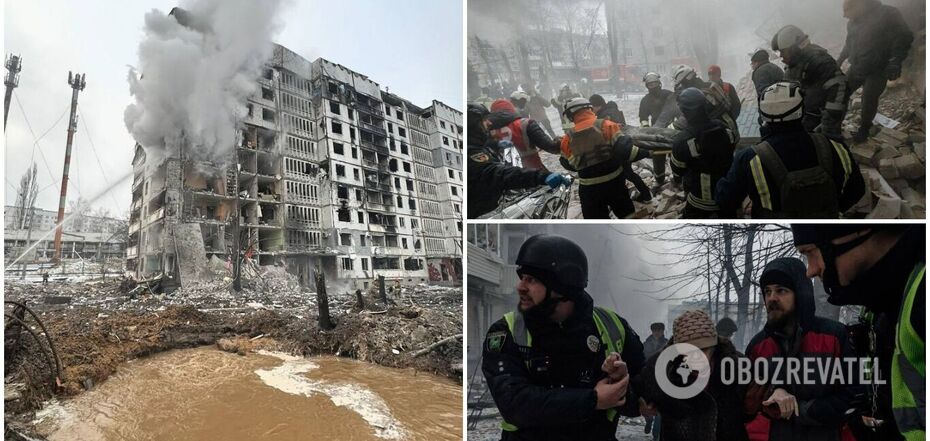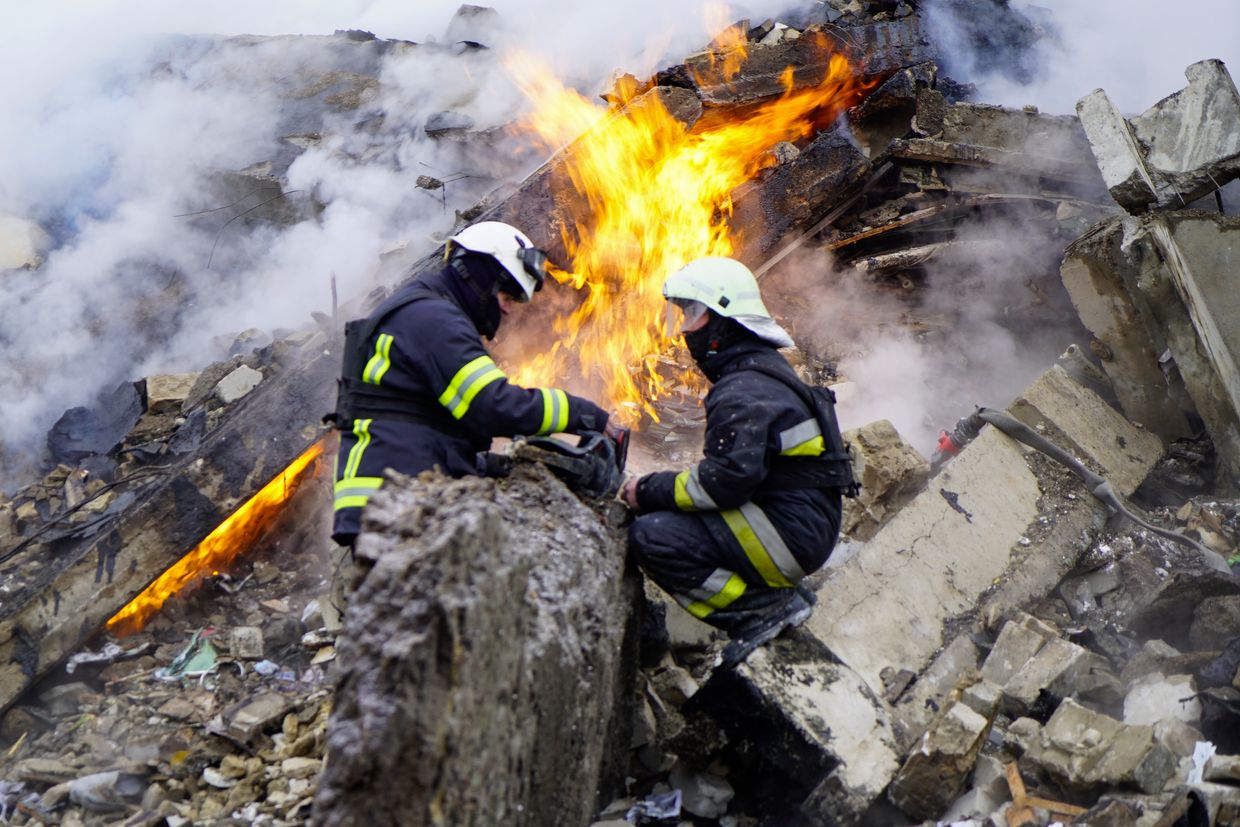Daily Flyer - Janaury 23, 2024
A voice of Ukraine to the West

Russia launches mass missile strikes at Kyiv, Kharkiv, other cities

A total of 41 means of air attack of the enemy were recorded. Most of the missiles are of those types that attack along a ballistic trajectory
Russia unleashed a barrage of missile strikes on Kyiv, Dnipropetrovsk, Kharkiv, and Sumy regions early on January 23, causing significant damage to civilian infrastructure and resulting in a tragic toll. Reports indicate that at least six people lost their lives, including a woman in Kyiv, where at least 18 others were injured. Mayor Vitali Klitschko provided updates on the casualties, highlighting that the victims, including a 13-year-old boy, received medical attention, with one woman being admitted to intensive care. The Solomianskyi district in Kyiv witnessed severe destruction, with an entrance to a multi-story building obliterated, while the Sviatoshynskyi district experienced fires from parked cars hit by missiles.
Further incidents occurred in the Pecherskyi district of Kyiv, where a non-residential building was struck, and in the Bucha district of Kyiv Oblast, where two high-rise buildings were hit, causing injuries from falling debris. Meanwhile, Dnipropetrovsk Oblast's Pavlohrad faced a substantial missile strike, resulting in the tragic death of a 43-year-old woman in a public square, with successful defense against a Russian missile reported. In Kharkiv, Russian attacks targeted civilian infrastructure, leading to the loss of four lives and injuries to 42 individuals. The assault caused extensive damage, including the destruction of a high-rise residential building in Kyivskyi district, trapping residents beneath the rubble.

Regrettably, the assault utilized Kh-22 missiles, as reported by Governor Oleh Syniehubov, indicating the severity and sophistication of the attack against Kharkiv. The affected areas are grappling with partial disruptions in electricity and water supply, with recovery efforts underway to restore essential services. These distressing events underscore the urgent need for international attention and support to address the humanitarian crisis unfolding in Ukraine as it faces a grave threat to its security and well-being.
The number of victims might raise, the emergency services are still working at the scenes of missile attack.
The number of victims might rise, and the emergency services are still working at the scenes of a missile attack.
Russia using relatively accurate, recently designed North Korean missiles against Ukraine
n recent days, Russia has escalated its use of North Korean missiles in its attacks on Ukraine, and U.S. officials are expressing concern over their accuracy. The military ties between Moscow and Pyongyang have deepened significantly since the onset of the full-scale invasion of Ukraine in February 2022. Ukrainian military intelligence chief Kyrylo Budanov has stated that North Korea is now the largest arms supplier to Russia.
Facing challenges in maintaining the production pace of its own weapons, Russia has sought military assistance from allies like North Korea. While some of the North Korean artillery rounds are outdated and may be duds, they provide Russia with additional firepower as Ukraine's military conserves its dwindling munition supplies. The use of North Korean missiles is raising concerns among Western officials due to their relatively recent design and worrisome accuracy.
Notably, Russia previously deployed North Korean ballistic missiles in strikes against Kharkiv on January 2. The New York Times reports that fewer than 50 of these missiles have been transferred to Russia so far, but there is potential for additional transfers. South Korean officials worry that Ukraine is becoming a testing ground for North Korean missiles, allowing Pyongyang to assess their effectiveness against Western-designed air defenses. Amid these developments, reports say that Russian President Vladimir Putin is planning to visit North Korea in the near future.
Russian attack on Kharkiv leaves 11,000 people without power

In a morning attack on Kharkiv, Russia left approximately 11,000 people without electricity, according to Ukraine's Energy Ministry on January 23. The missile strikes caused damage to transformer substations, an electricity distribution point, and power cables in Kharkiv, resulting in widespread power outages. Kharkiv Mayor Ihor Terekhov reported on national television that parts of the city were without essential services such as water, electricity, and heat, which was especially challenging amid freezing temperatures.
Beyond electricity disruptions, a medium-pressure gas pipeline in Kharkiv suffered damage during the attack. Naftogaz, Ukraine's state-owned energy giant, noted that this was the most significant damage to gas infrastructure in Kharkiv this winter. The damage led to a fire that has since been extinguished, and repair efforts are underway. Additionally, Russian shelling impacted an unspecified number of people in Kharkiv Oblast, leaving them without power. Repair works are ongoing in both Kharkiv and the wider region. In Dnipropetrovsk Oblast, Russian attacks initially left over 14,000 people without power, but the supply has now been fully restored, as reported by Ukraine's state-owned energy operator Ukrenergo.
Ukraine downs 21 of 41 Russian missiles
Overnight on January 23, the Russian Armed Forces conducted a barrage of missile attacks against Ukraine, launching a total of 41 missiles, as reported by the General Staff of Ukraine's Armed Forces. Ukrainian air defense systems successfully intercepted and shot down 21 of these missiles. The attacks utilized various types of missiles, including cruise, ballistic, aerial, and anti-aircraft-guided missiles, targeting cities in Kyiv, Kharkiv, Sumy, and Dnipropetrovsk oblasts. The strikes resulted in the death of at least six people and left over 50 injured, according to Ukrainian officials.
The Ukrainian Armed Forces achieved successful interceptions of all 15 Russian cruise missiles (Kh-101/555/55), five ballistic Iskander missiles, and one aerial guided missile (Kh-59). Additionally, Russian troops launched four S-300/400 missiles from Belgorod Oblast towards Kharkiv Oblast. The General Staff also recorded the launch of 12 Iskander-M ballistic missiles from Belgorod and Voronezh oblasts. Strategic bombers, including Tu-95 and Tu-22, fired a total of 15 Kh-101/555/55 cruise missiles and eight Kh-22 missiles. Furthermore, two Kh-59 guided aerial missiles were launched from two Su-34 aircraft.
The intensity and variety of the missile attacks underscore the ongoing escalation of hostilities and the complex nature of the conflict between Russia and Ukraine.

